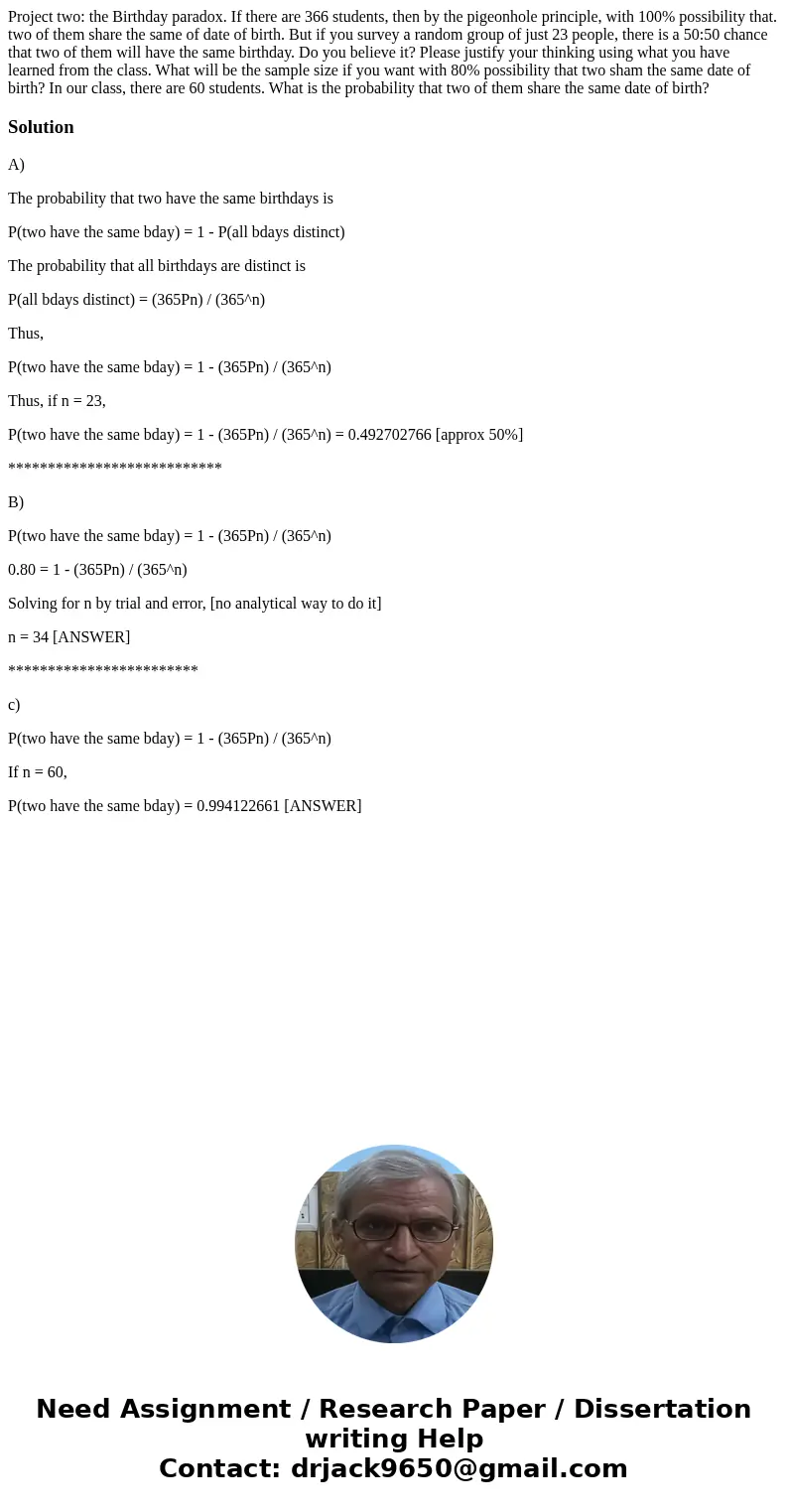Project two the Birthday paradox If there are 366 students t
Project two: the Birthday paradox. If there are 366 students, then by the pigeonhole principle, with 100% possibility that. two of them share the same of date of birth. But if you survey a random group of just 23 people, there is a 50:50 chance that two of them will have the same birthday. Do you believe it? Please justify your thinking using what you have learned from the class. What will be the sample size if you want with 80% possibility that two sham the same date of birth? In our class, there are 60 students. What is the probability that two of them share the same date of birth? 
Solution
A)
The probability that two have the same birthdays is
P(two have the same bday) = 1 - P(all bdays distinct)
The probability that all birthdays are distinct is
P(all bdays distinct) = (365Pn) / (365^n)
Thus,
P(two have the same bday) = 1 - (365Pn) / (365^n)
Thus, if n = 23,
P(two have the same bday) = 1 - (365Pn) / (365^n) = 0.492702766 [approx 50%]
***************************
B)
P(two have the same bday) = 1 - (365Pn) / (365^n)
0.80 = 1 - (365Pn) / (365^n)
Solving for n by trial and error, [no analytical way to do it]
n = 34 [ANSWER]
************************
c)
P(two have the same bday) = 1 - (365Pn) / (365^n)
If n = 60,
P(two have the same bday) = 0.994122661 [ANSWER]

 Homework Sourse
Homework Sourse